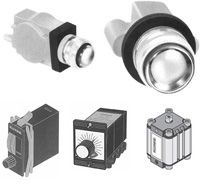Safety and Pneumatic Control Systems: General Overview (pt.1)
When using pneumatic control systems, it is important to make design choices that optimize performance and safety. You must then use systems with care because although these control systems are often seen as safer than gas and electric-powered systems, you can still damage the system, break merchandise, and harm employees.

When beginning a system design, you want to start with the connection to air preparation hardware. Once that problem is solved, the design continues to pair cylinders with valves correctly. Taking extra care to design pneumatic control systems ensures safer operations in the event of an emergency or when a loss of air supply is available to the system.
Safety should be thought about in two ways: human safety and system safety. Besides wanting to keep employees healthy and on the job, users must be worried about damage to machines. For example, using faulty pneumatic valves and pneumatic controls can cause excessive wear and tear on a system. In these instances, a system needs either replacement parts or major repair. For instance, vertical air cylinders suffer from dropping when not properly installed and outfitted with the proper pneumatic controls.
Systems that have safe-stop functionality add an extra layer of safety because these systems prevent unexpected activation from a resting state. This functionality halts dangerous motions.
In the follow-up article, we will discuss valve selection and safe operations. If you need any more information, you should not hesitate to call our talented team.
Related Reading
- Basics of Directional Control Valves
- Controling Pneumatic Energy
- Guide for Using Miniature Solenoid Valves


- Ellis/Kuhnke Controls
132 Lewis Street Unit A-2, Eatontown, N.J. 07724
Phone: 1-800-221-0714
Fax: 732-291-8154
Email: Info@ekci.com
- Home Pneumatic Controls Technical Info CAD Drawings Contact Us Pneumatic Timers Blog Site Map
